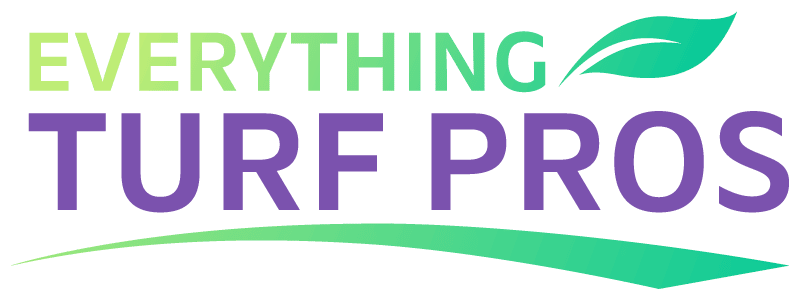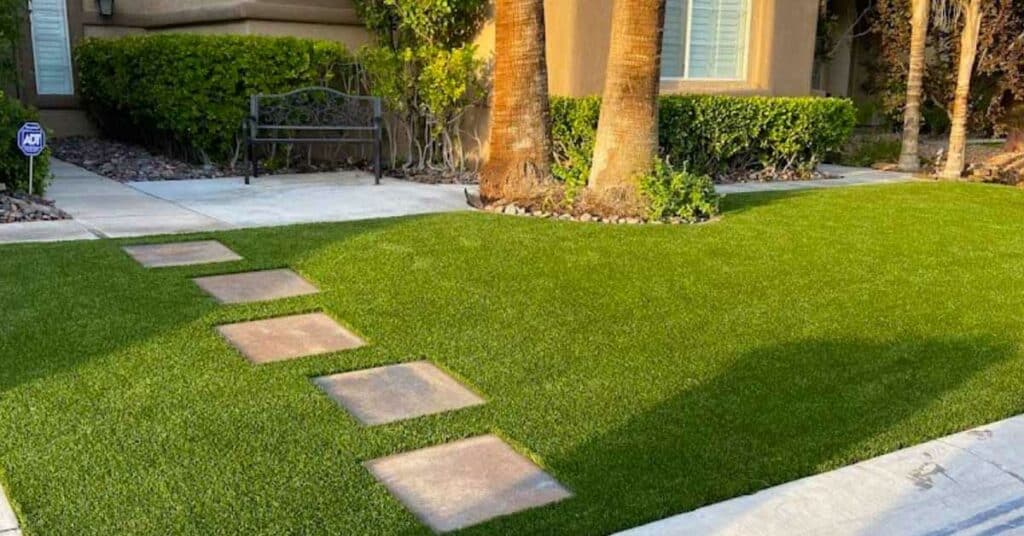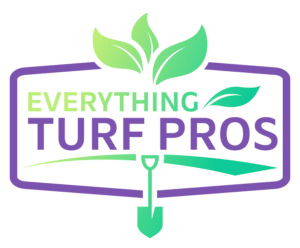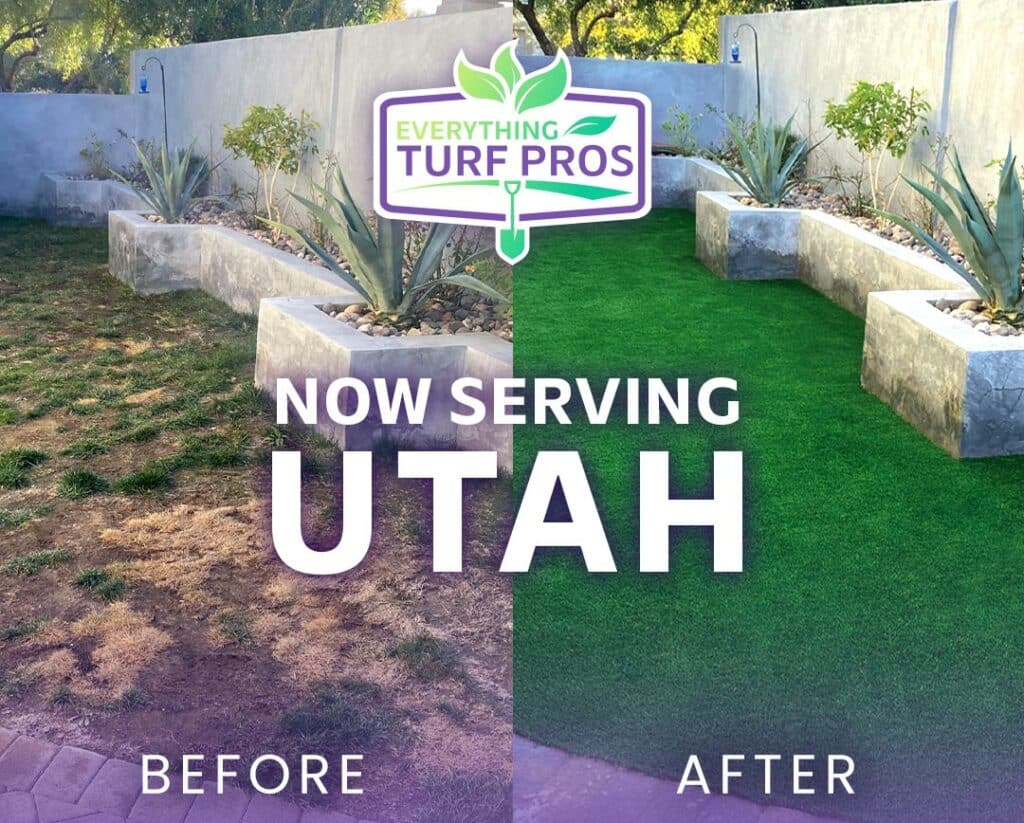Drought is widespread in the southwestern United States. A drought, especially over a long duration, means dry, splotchy grass due to limited rainfall. If you live in the more arid parts of the country, you’re probably familiar with seeing brown patches of grass on your lawn. Everything Turf Pros is well-versed with drought and how it can affect grass in Nevada. Our business understands that drought-resistant lawns are important to homeowners living in drought prevalent areas.
Drought levels and how they are measured
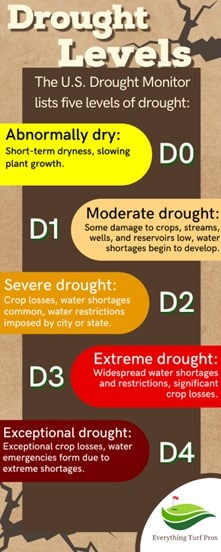
Patchy lawns can be annoying. But yards are not the only thing that drought affects. Farms face significant crop loss and city and state-wide water systems are burdened by depleting supply and increasing demand. Heatwaves also become more frequent.
Here are the 5 levels of drought from the U.S. Drought Monitor:
- D0 – Abnormally dry; short-term dryness, slowing plant growth.
- D1 – Moderate drought; some damage to crops, streams, wells, and reservoirs low, water shortages begin to develop.
- D2 – Severe drought; crop losses, water shortages common, water restrictions imposed by city or state.
- D3 – Extreme drought; widespread water shortages and restrictions, significant crop losses.
- D4 – Exceptional drought; exceptional crop losses, water emergencies form due to extreme shortages.
Most of Nevada is in a D2 drought as of 2022. Nye, Lincoln, and Clarke counties in the southernmost part of the state are hit the worst with D4 levels of dryness. According to the National Integrated Drought Information System (NIDIS), which has been tracking drought in the United States since 2000, the most prolonged period of drought in Nevada lasted from December 27, 2011, to February 14, 2017. Nevada’s last most intense drought period was in 2021, when over 40% of the state was affected by D4 levels of drought.
Watering your yard during a drought is burdensome—city ordinances often require residents to water during certain days of the week, times of day, and for specific amounts of time. Watering outside of these requirements can land residents with hefty fines. For example, Las Vegas restricts the use of watering residential and commercial lawns during a drought. Water waste fines can range from $80 to over $5,000 depending on the size of watering, level of drought, and past violations.
Drought vs. natural grass lawns
An average residential lawn is about 10,000 square feet. A natural grass lawn needs about 1 to 1.5 inches of water per week to stay irrigated–-that adds up to over 6,000 gallons of water used to keep a single natural grass lawn healthy and green!
With water conservation rules set in place, patches of grass can die off without regular watering and reveal dry dirt underneath. Lawn care gets even more expensive once you go out and buy more grass to compensate for the loss in your yard.
According to the Environmental Protection Agency (EPA), one-third of water is used outdoors for landscape irrigation in the United States. As much as 50% of the water used outside is wasted due to evaporation, wind, or runoff. Nevada only receives 9.8 inches of rain annually, and the rest of its water supply comes from the Colorado River. Southern Nevada’s single- and multi-family households account for 60% of that region’s water consumption. 70% percent of that water is used for landscaping outside.
Don’t know if your area is in a drought? Here are some tips to become drought-aware.
- Visit the National Integrated Drought Information System website (drought.gov) and type in your zip code or choose your state in the “By Location” drop-down menu and view your area’s map and drought conditions.
- Look at your water bill to see how many gallons of water you use per month. The amount will be labeled as CCF or gallons.
- Compare your water usage in the winter and summer. Summer months will often show more water usage due to landscape irrigation.
Now that you know if your area is or is not in a drought, you can decide what type of landscaping is best for you. Of course, you can wait out a drought and hope for the best, but Everything Turf Pros has a better solution for you and your lawn if you live in an area affected by drought.
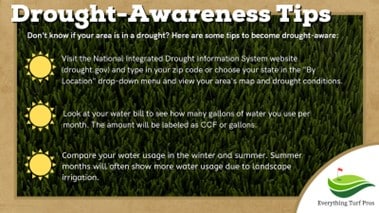
Why is artificial turf the best choice for you and your lawn?
Artificial turf is an excellent choice for homeowners looking to conserve water during a drought. Artificial turf is considered drought-resistant, which means conserving water equals saving cash on your water bill. Besides saving money year-round, a synthetic lawn stays vibrant and lush during a drought and doesn’t succumb to heat like natural grass.
Artificial turf doesn’t require the quantity of water natural grass needs for upkeep. To keep debris like dust, dirt, and pollen on an artificial lawn, simply give it a quick spray with the hose once or twice a week. If you’re worried about stray branches, leaves, or rocks getting on your lawn, use a leaf blower to keep it looking grasstastic! Plus, you don’t have to mow your yard in the scorching heat (phew!). Minimal yard manicuring will not only save the environment but save you time to spend on more important things–-like spending time with loved ones on your turf.
Everything Turf Pros provides installation of Turf Envy brand artificial turf products. Turf Envy has 11 turf types to choose from — from turf great for sports and heavy play to turf perfect for minimal traffic landscaping. Worried about the temperature of turf staying cool during hot drought weather? Look no further than the T°Cool® Infill that Turf Envy provides. T°Cool® provides up to a 50°F cooler turf surface that will throw your worries to the fence.
Saving the environment and saving you cash
California, Arizona, and Nevada have the most extensive tax rebate programs for single-family households and commercial properties looking to get rid of their natural grass. The Southern Nevada Water Authority (SNWA), which serves Las Vegas and the surrounding southern areas, provides a program for single-family homeowners and businesses called Water Smart Landscapes Rebate. The program offers a $3.00 rebate for each square foot of natural grass removed with a minimum of 400 square feet. Interested in learning more about this cash incentive for switching to artificial turf? Read on about the SNWA rebate here.
Switching to artificial turf is ideal for those living in the Southwestern United States. The investment you make in the change is worth the difference. You will instantly notice the difference in time spent caring for your yard between natural grass and artificial turf. As an added bonus, you will save on your water bill and help conserve your community’s water supply. Lay your new lawn with Everything Turf Pros and get the most out of your yard!
